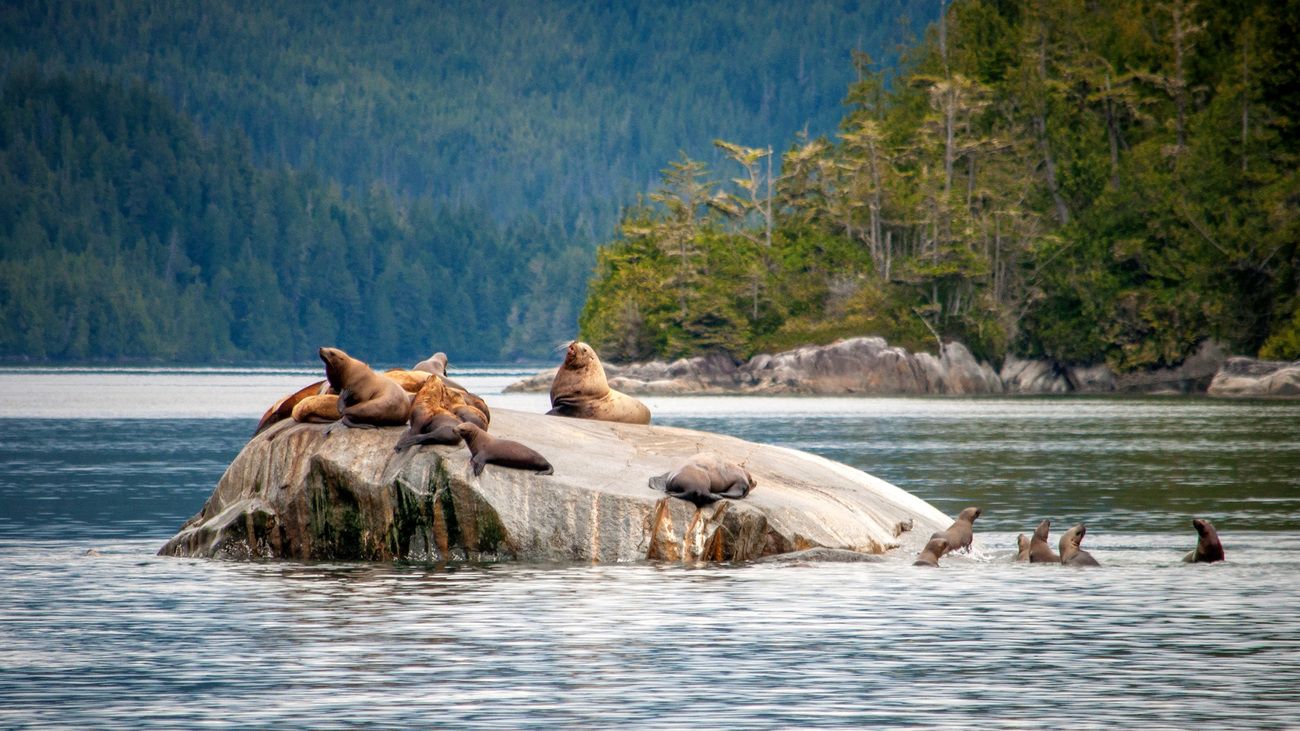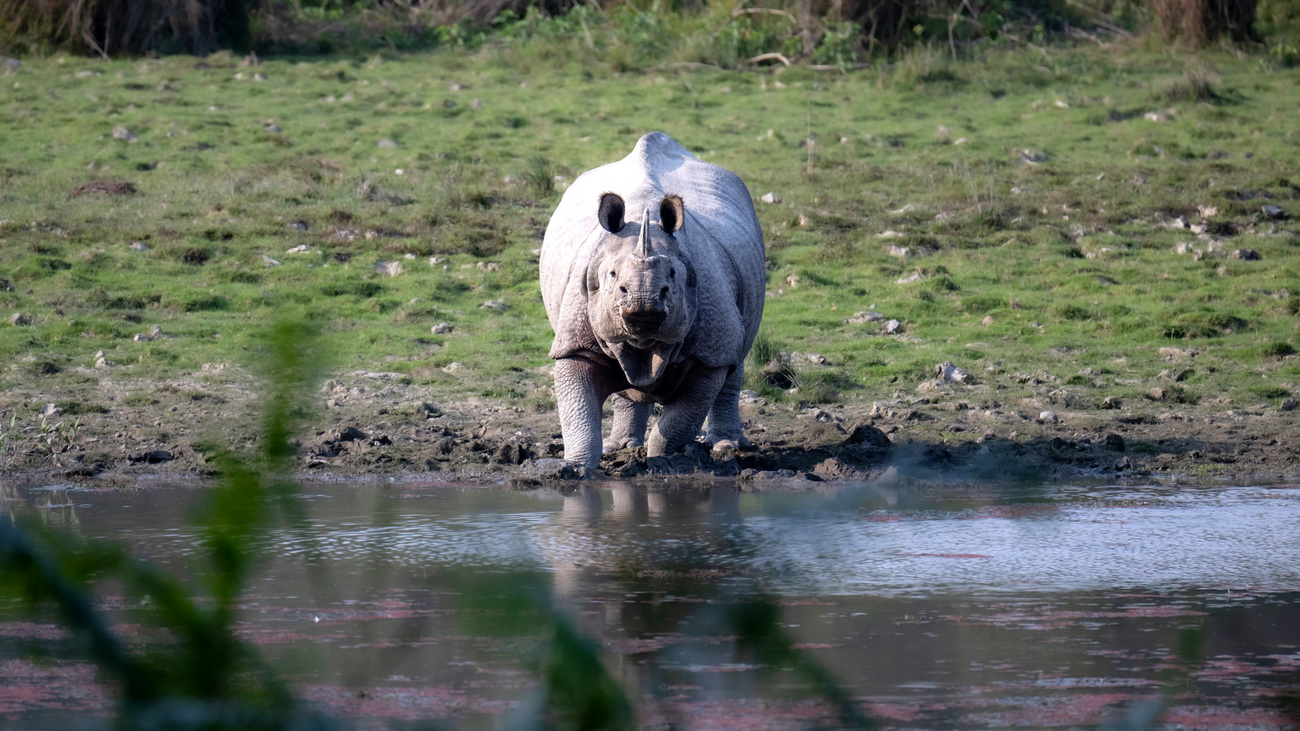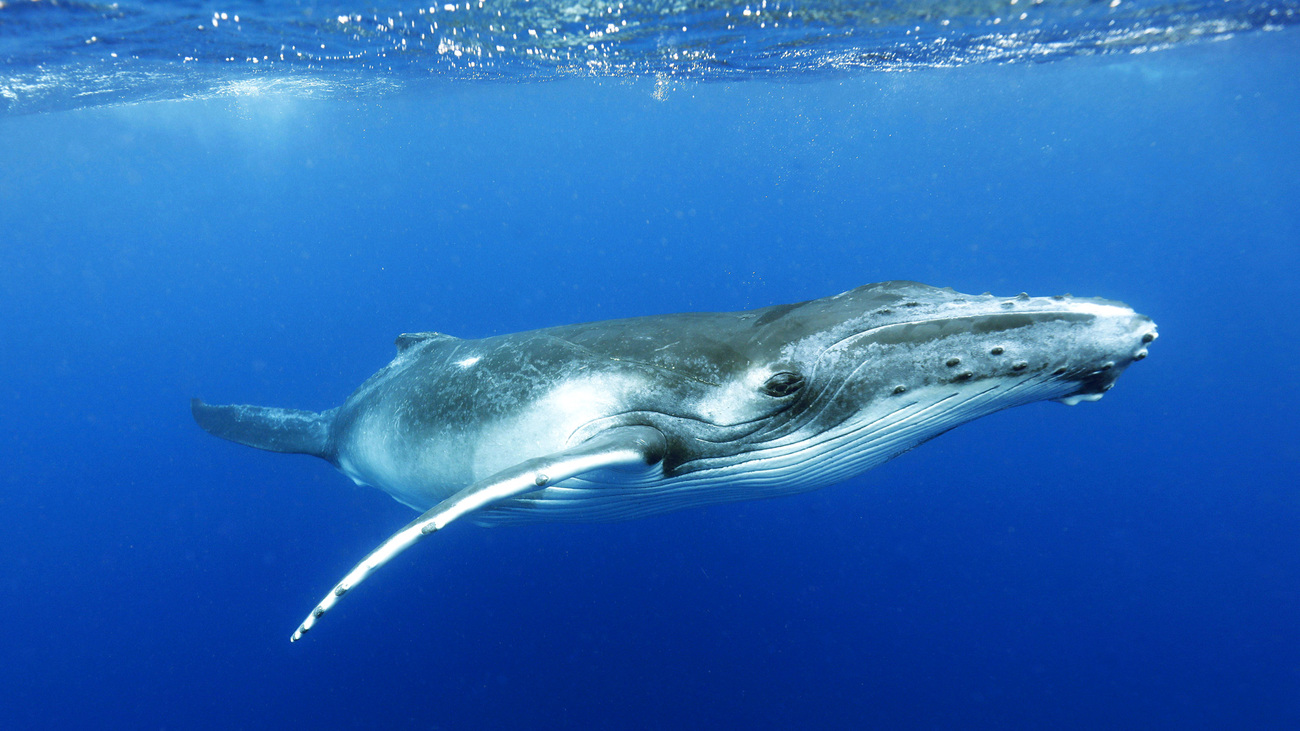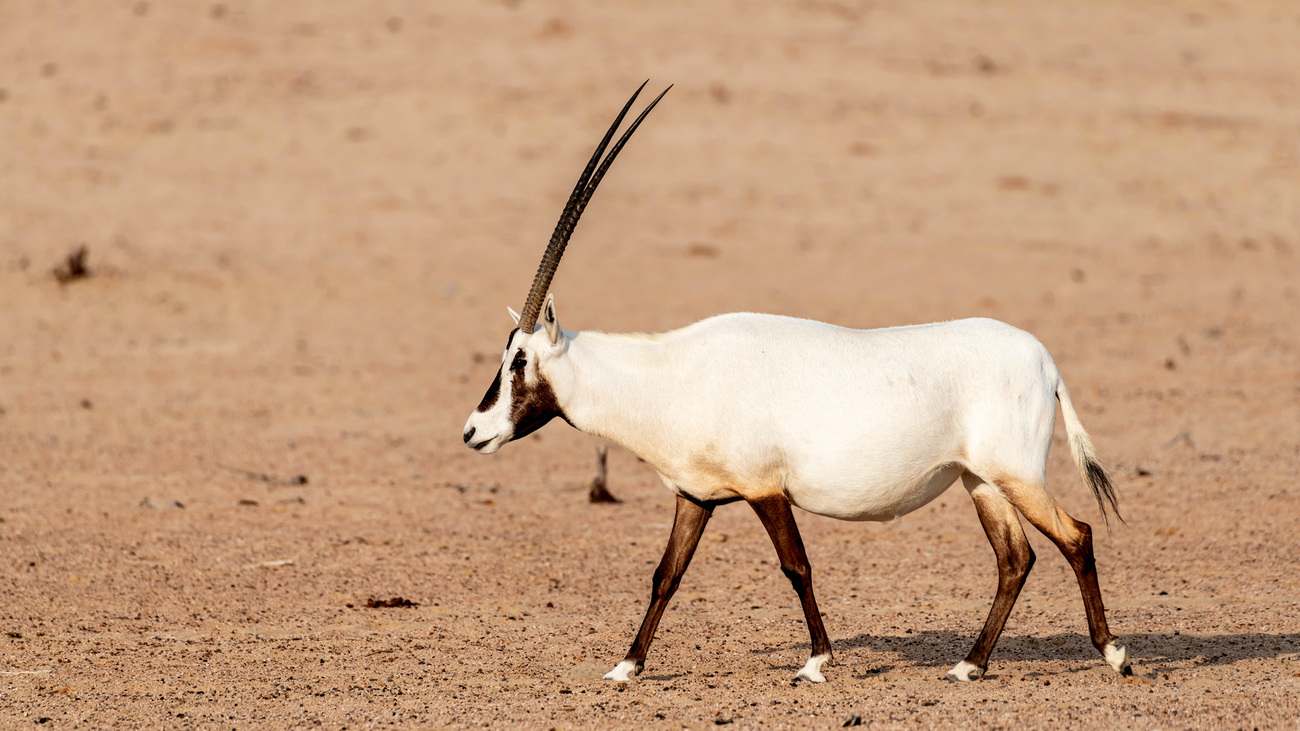Blog
Discover the four layers of the forest—and the animals living in it
Read more15 animals that recovered from being endangered
As we are living through the planet’s sixth mass extinction event, a large number of species have recently been declared extinct. But there have also been many success stories, thanks to strong conservation and wildlife protection laws, rehabilitation and breeding projects, and other interventions that were properly implemented.
IFAW is a conservation and rescue organisation working around the world to help vulnerable species like these and the habitats they call home. We want to build a future where animals and people can thrive together.
Let’s explore 15 endangered species that recovered thanks to conservation efforts and learn more about what saved them.
Scientific name: Haliaeetus leucocephalus
Possibly one of the most famous birds in the world, the bald eagle is known across the globe as the national bird of the United States. Despite its fame, this US native was listed in the Endangered Species Act in 1978 in all states except Michigan, Minnesota, Oregon, Washington, Wisconsin, and Alaska.
The decline of the bald eagle is attributed to illegal hunting, habitat destruction, and unintentional poisonings, most commonly from the pesticide dichlorodiphenyltrichloroethane (DDT). When DDT was introduced after World War II, its widespread use led to the contamination of bald eagle food sources as it leached into bodies of water and was ingested by fish. Many eagles were poisoned after eating contaminated fish, leading to substantial population declines.
Since being listed in the Endangered Species Act, the bald eagle has significantly recovered thanks to several efforts, including passing the Bald Eagle Protection Act, which prohibits hunting, and the nationwide ban on DDT.
In 2024, the IUCN reclassified the bald eagle as least concern with an estimated global population of 200,000 mature individuals—a remarkable turnaround for this iconic species.
Scientific name: Falco peregrinus

Despite having a vast range, the peregrine falcon was added to the Endangered Species Act in the US in 1973. Hunting and trapping were significant drivers behind the decline of peregrine falcon populations worldwide, with habitat loss through human activity also playing a major role.
Like the bald eagle, peregrine falcons experienced widespread poisoning from DDT, which led to steep declines in their numbers, particularly in the US. With the nationwide ban on DDT in the US, populations began to recover. Peregrine falcons are now legally protected under the Migratory Bird Treaty Act (MBTA) and are supported by breeding programmes to help population growth. As of 2025, the IUCN classifies the peregrine falcon as least concern, with an estimated population of 100,000 to 499,999 mature individuals.
Scientific name: Pyrrhula murina
The Azores bullfinch is a small bird found in a limited range in Portugal, in forests and shrubland at higher altitudes. This small range likely played a part in the decline of this species, along with habitat loss to farmland and hunting by humans, both as pest control and for collection. Small populations are also vulnerable to inbreeding and more at risk from habitat loss and extreme weather conditions.
The IUCN declared the species endangered in 2000 before upgrading it to critically endangered in 2005.
The Azores bullfinch kept its critically endangered classification until 2010, when it was downgraded to endangered. Since 2016, it’s been classed as vulnerable.
Several conservation efforts have been put in place to help restore the Azores bullfinch population. The bird is protected under Portuguese law. Its habitat in Pico da Vara/Ribeira do Guilherme was designated as a Special Protected Area under the LIFE Priolo Project in 2007.
Other successful conservation efforts include land management initiatives to remove invasive species and replant native species, educational programmes for people living in the local area, and monitoring the species through capture and tagging.
Scientific name: Eumetopias jubatus

Found in the Bering Sea and the Northern Pacific Ocean, the steller sea lion is a subspecies of sea lion threatened primarily by human activity. Although it is unclear exactly what led to their decline, intentional culling by fishermen to remove these sea lions as competition for fish was likely a leading cause. Unintentional capture by fisheries and loss of food sources also played a role.
The discontinuation of intentional culling has helped steller sea lion populations recover. Populations have continued to grow after the National Oceanic and Atmospheric Administration (NOAA) established a recovery plan in 1992 (revised in 2008). Efforts to protect habitats and reduce human-sea lion conflict by designating no-go zones for fishing have also helped. Steller sea lions are now classified as near threatened by the IUCN, with an increasing population of 81,327 mature individuals. However, they are still considered threatened under the US Endangered Species Act.
Scientific Name: Alligator mississippiensis
The American alligator is another species endemic to the US and was placed on the US Fish and Wildlife Service (USFWS) endangered species list in 1967. This reptile is found along the freshwater coasts of the US East Coast and can live for up to 50 years in the wild.
American alligators were first threatened in the 1800s due to the demand for their hides, leading to widespread hunting and population declines. Their numbers declined further due to agriculture, chemical contamination, extreme weather events, and saltwater intrusion.
Robust conservation efforts have helped turn the tide for this species, including land management, limits on trade, research on the species, and farming and ranching practices that minimise their impact on alligators.
Thanks to conservation efforts, the American alligator was removed from the Endangered Species Act just 20 years after it was first listed. Between 750,000 and 1,060,000 mature American alligators live in the US today, and the IUCN classifies them as least concern.
Scientific name: Diceros bicornis occidentalis
A subspecies of the black rhino, the southwestern black rhino faces an immense threat of poaching. Rhino horns are often used in traditional medicine and for decorative purposes, which caused the southwestern black rhino to be hunted to near extinction for its horns. Habitat loss has also been devastating for black rhino populations.
Unlike the black rhino species as a whole, which the IUCN classifies as critically endangered, the southwestern black rhino has seen its population bounce back from the brink in recent years. Projects like SOS African Wildlife that involve population management and monitoring, as well as a crackdown on poaching, have been helping steadily increase southwestern black rhino numbers, with an increasing population of 1,334 mature individuals. The southwestern black rhino is now classed as near threatened by the IUCN.
Scientific name: Rhinoceros unicornis

The greater one-horned rhino, also known as the Indian rhino, is the largest rhinoceros on Earth and is found across a relatively limited range in India. Despite being widespread in the country in the past, populations declined steeply due to a combination of hunting and habitat loss, both due to human action and invasive species reducing habitat quality.
Despite once reaching lows of just 200 individuals, conservation efforts like population management and tracking have helped this species make a huge comeback. The greater one-horned rhino is now classified as vulnerable by the IUCN.
While the greater one-horned rhino population is increasing, with around 2,100 to 2,200 mature individuals living today, more work is needed to protect them moving forward.
Scientific name: Ailuropoda melanoleuca
One of the most recognisable species in the world, the giant panda has long been threatened in its native China. A combination of habitat loss and fragmentation, poaching, and human encroachment led to severe declines in panda numbers.
The giant panda was the beneficiary of one of the most high-profile and intensive conservation efforts ever. China joined the Convention on the International Trade in Endangered Species (CITES), making trade in panda skins illegal and stopping most panda poaching. The country also established reserves to protect panda habitats, undertook substantial research into the species, and established breeding programs.
As a result, the giant panda was reclassified as vulnerable by the IUCN in 2016, with an increasing population of 500 to 1,000 mature individuals.
In 2024, the Chinese government approved plans for a giant panda reserve spanning 27,134 square kilometres (10,476 square miles). The proposed park will connect 67 existing panda reserves across the Gansu, Shaanxi, and Sichuan provinces. It’s thought that connecting the existing reserves will allow pandas to mate with a larger population and create a more diverse gene pool.
As of 2025, there are around 1,900 giant pandas living in the wild and another 757 in captivity.
Scientific name: Lynx pardinus
The Iberian lynx is one of four living species of lynx. Native to the Iberian Peninsula, the Iberian lynx were found across Spain and Portugal. Then, starting in the 1960s, populations began to fall sharply, pushing the subspecies to the brink of extinction. Thanks to the threats of habitat loss, reduced food availability, poaching, and human collisions, the species was classified as endangered by the IUCN in 1986. In 2001, there were only 62 mature individuals left in the wild. In 2002, they were listed as critically endangered. By 2005, there were no remaining Iberian lynx in Portugal.
Thanks to conservation efforts that focused on increasing the availability of the Iberian lynx’s main food source—the European rabbit—the Iberian lynx population began to climb. Portugal introduced a National Breeding Centre for Iberian lynxes in Silves in the Algarve. Additional programmes that saw the release of hundreds of captive lynxes, as well as efforts to restore their habitats also contributed to the rebound of the species.
In 2015, the IUCN reclassified the Iberian lynx as endangered. They were most recently assessed in 2024 as vulnerable, with an increasing population of 648 mature individuals. There are now thought to be 13 clusters in Spain and one cluster in Portugal.
Scientific name: Megaptera novaeangliae

Found in all major ocean basins, humpback whales are one of the most widespread whale species. Historically, the primary threat faced by these marine mammals was hunting, with commercial whaling playing a substantial role in their decline. Ship strikes, pollution, entanglement in nets, and climate change also significantly contributed to their decline.
The outlawing of commercial whaling has allowed populations to recover. Various sanctuaries and other humpback whale protection programs have also been established worldwide. The IUCN now classifies the humpback whale as the least concern, with an estimated population of 84,000 mature individuals. Unfortunately, humpback whales are still under threat due to warming sea temperatures. As sea temperatures rise, humpback whales are forced to travel further than ever to reach their breeding grounds. Scientists estimate that by the end of the century, 37% to 67% of humpback breeding grounds will be too warm for whales to comfortably breed there, depending on how fossil fuel emissions are managed going forward.
Scientific name: Apteryx mantelli
One of five recognised species of kiwi, the North Island brown kiwi is found in a limited range in New Zealand. These birds’ primary threat is predation, particularly from dogs, cats, and stoats. Habitat loss and disease are also threats but likely aren’t driving factors behind population declines.
Operation Nest Egg was introduced in 1995 and involves removing kiwi eggs from the wild and reintroducing the birds when they are too large to be targeted by predators. This initiative alone has been enough to help populations in these managed sites increase by 12.5% per year. Habitat management has helped the North Island brown kiwi's status improve from endangered to vulnerable.
Scientific name: Urocyon littoralis

The island fox is only found on six of the eight Channel Islands off the California coast. Declines in bald eagle populations led to an explosion of golden eagle populations due to a lack of competition. This led to increased predation of island foxes by golden eagles, ravaging their already small numbers.
Four of the six island fox subspecies were listed in the Endangered Species Act in 2004, and breeding and recovery programmes were introduced to help improve their populations. With the reestablishment of bald eagles and the removal of non-native species from their habitats, island foxes recovered. Three Channel island fox subspecies were taken off the US Endangered Species list in 2016, and they are now classed as near threatened by the IUCN.
Scientific name: Pterodroma axillaris
The Chatham Islands petrel is another species with a very limited range—they are only found in three locations worldwide. These seabirds were outcompeted by the broad-billed prion for burrows in their shared habitat, leading to conflict between the species and decreased petrel numbers. Predation from other animals, like cats and dogs, and human development have also led to population decline.
Conservation efforts to remove competition between petrels and prions have increased breeding success for petrels from 10-30% to 80%. As of 2025, the Chatham Islands petrel is classified as vulnerable by the IUCN, with a population of 1,100 mature individuals. However, if conservation efforts stop, competition with prions would likely cause severe population declines again.
Scientific name: Oryx leucoryx

The Arabian oryx is the smallest oryx species and is found in a very limited range in the Middle East. Despite being protected in the Oman Arabian Oryx Sanctuary, poachers could still hunt and capture many individuals for sale into private collections. This effectively rendered conservation efforts useless, which, alongside overgrazing and droughts, led to sharp declines in the Arabian oryx population.
Reintroduction efforts in several countries, coupled with breeding programmes and protection in private collections, have helped Arabian oryx numbers recover significantly. The Arabian oryx is now classified as vulnerable by the IUCN. They have a stable population of around 1,220 oryxes (850 mature individuals) in the wild with an estimated 6,000 to 7,000 in captivity worldwide.
Scientific name: Canis lupus
The grey wolf was once the world’s most widely distributed mammal, found all across Europe, Asia, and North America. But due to habitat loss, persecution, and disease, grey wolf populations dramatically decreased.
In the US, a large portion of the species was wiped out in a government-approved extermination plan to make way for urbanisation and domesticated animal farming. As a top predator and keystone species, sudden population declines triggered Yellowstone National Park's ecological collapse in the 1920s.
This led to the grey wolf being added to the Endangered Species Act in 1974, which gave federal protections to the species. Since then, grey wolf populations have increased.
In 2019, the US Fish and Wildlife Service announced plans to delist grey wolves from the Endangered Species List based on the species’ recovery rates in the Great Lakes. However, the recovery of a single population was not representative of the entire country, so in 2022, the grey wolf was relisted as an endangered species to continue conservation efforts. In the EU, the wolf’s protection status was unfortunately downgraded in December 2024.
Today, grey wolves are classed as least concern on the IUCN Red List. Though their numbers have recovered in some places, retaining legal protections is still crucial for keeping this species strong.
Hopefully, the stories of these species have given you some insight into why conservation initiatives are crucial to the survival of many species with which we are lucky enough to share our planet.
In particular, the Endangered Species Act has played an integral role in helping many of the species on this list recover from being endangered and preventing them from going extinct. The Endangered Species Act celebrated its 50th birthday in 2024 and, in those 50 years, has helped save 99% of listed species from extinction.
This was only possible through the collaboration of many different organizations and initiatives and the support of government agencies and the public.
We all have a role to play in safeguarding our animal species, and there is no better way to help than by supporting conservation efforts and international agreements to protect wildlife like CITES.
At IFAW, we pair fresh thinking and bold action to protect vulnerable animal species and preserve biodiversity, building a world where animals and people can thrive together.
Every problem has a solution, every solution needs support.
The problems we face are urgent, complicated, and resistant to change. Real solutions demand creativity, hard work and involvement from people like you.
Unfortunately, the browser you use is outdated and does not allow you to display the site correctly. Please install any of the modern browsers, for example:
Google Chrome Firefox Safari